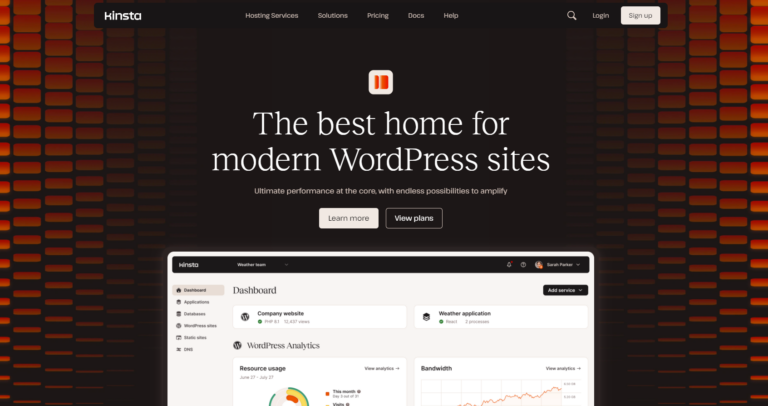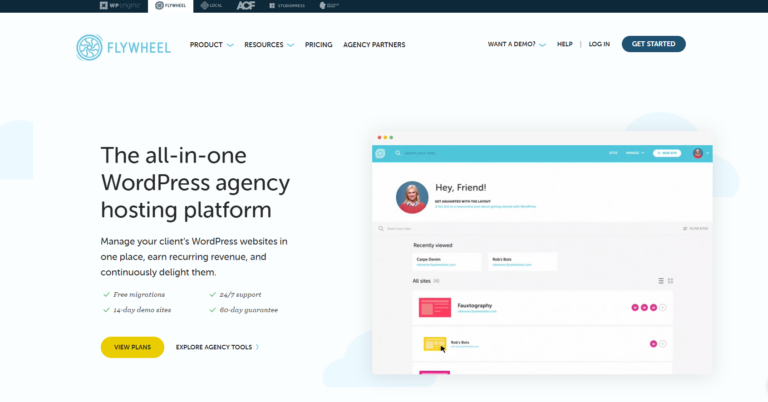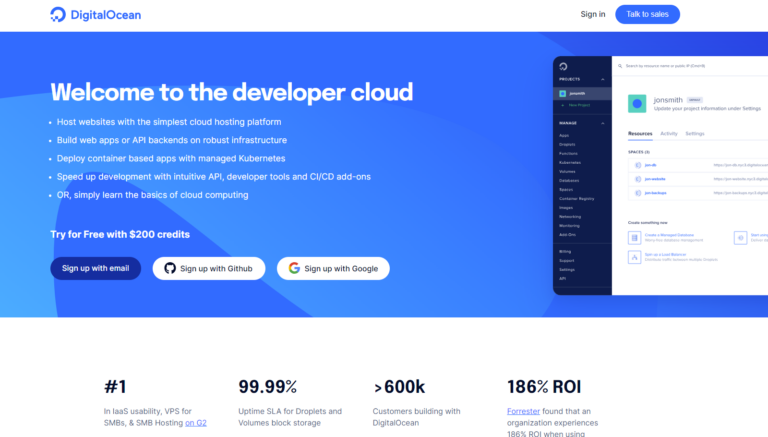Web Development Showdown: No-Code / Low Code Solutions vs. Traditional Coding
Unveiling No-Code and Low-Code Solutions
No-code and low-code platforms have indeed revolutionized the conventional approach to application development. By providing an intuitive environment, these platforms significantly minimize the necessity for extensive manual coding. They offer a diverse suite of tools, ranging from drag-and-drop interfaces to pre-designed templates, effectively democratizing the development process. This democratization allows not only experienced developers but also novices or non-technical individuals to actively contribute to the creation of applications, ushering in an era of inclusivity and accessibility in software development.
Advantages of Low-Code and No-Code Platforms
The advantages of no-code and low-code solutions transcend the swiftness they bring to the development table. While they indeed facilitate a faster time-to-market and reduce overall development costs, their real prowess lies in fostering collaborative development. These platforms bridge the gap between coding expertise and non-technical domain knowledge, empowering businesses to craft robust software solutions. By democratizing the development arena, they enable diverse teams to contribute effectively, ensuring that ideas translate into practical, functional applications without the traditional barriers imposed by coding complexities.
Lets Talk About Some No-Code/Low-Code platforms and services
Webflow
Webflow is a powerful tool that’s changing the game in web development. This Software as a Service (SaaS) application empowers designers to construct responsive websites using a browser-based visual editing software. It’s a design and hosting platform specifically built for the mobile age.
What sets Webflow apart is its ability to allow users to design, build, and launch responsive websites visually, while simultaneously writing clean, semantic code. As designers utilize the tool, Webflow automatically generates HTML, CSS, and JavaScript. This feature makes it an invaluable resource for designers who don’t code and developers looking to expedite their workflow.
In essence, websites built on Webflow are powered by the future of web development. Stay tuned as we delve deeper into what makes Webflow the go-to platform for modern web development.
Bubble
Bubble is a trailblazing platform that’s reshaping how we create web applications. With its no-code app development framework, Bubble enables users to design, develop, host, and scale applications, all without writing a single line of code.
This web app-building platform serves as an alternative to traditional programming languages like Ruby-on-Rails or Django. Bubble’s visual programming language allows you to build applications through a point-and-click interface. This means you can create complex web and mobile applications without any prior coding experience.
But Bubble isn’t just about building applications; it’s about scaling them too. With Bubble, you have the power to build anything from simple websites to complex web applications that can handle millions of users.
Moreover, Bubble offers a range of resources to help you on your no-code journey. From videos and interactive lessons in the Bubble Academy to a community of thousands of Bubble Developers, you have a wealth of knowledge at your fingertips.
In essence, Bubble is defining the future of no-code. Whether you’re a beginner or an enterprise, Bubble provides the tools and resources you need to bring your ideas to life. Stay tuned as we explore more about Bubble, the future of no-code web development.
Pagecloud
Pagecloud is an innovative website builder that’s making a significant impact in the no-code web development arena. This platform provides everything you need to construct a high-performing website and expand your business.
Pagecloud distinguishes itself with its user-friendly drag-and-drop interface, enabling you to publish your website for free. It’s designed with marketers, designers, and entrepreneurs in mind, allowing for the creation of custom websites without the lengthy development process.
One of the key features of Pagecloud is its AI-powered content management system. This feature assists you in generating, editing, and enhancing your site’s copy and blog posts. It’s akin to having your own AI assistant to help you craft compelling content.
But Pagecloud isn’t just about building websites. It also offers built-in analytics and SEO tools to help you understand your users and optimize your search presence. With Pagecloud, you can create content that targets new users, captures leads, and converts visitors into customers.
Moreover, Pagecloud offers unparalleled flexibility in design. You can easily customize your layout and design with Sections. Plus, it ensures your site seamlessly transitions to a mobile responsive layout.
In essence, Pagecloud is a comprehensive solution for no-code web development. Whether you’re a novice or a professional, Pagecloud provides the tools and resources you need to bring your ideas to life. Stay tuned as we delve deeper into what makes Pagecloud a top choice for modern web development.
Appy Pie
Appy Pie is a leading platform in the no-code movement, offering a solution that simplifies the app development process. This AI-powered app builder allows you to create an app for your startup or small business, making your products and services accessible to a wider audience.
Appy Pie serves as an alternative to traditional programming, enabling users to build their own apps without any coding knowledge. This platform is ideal for individuals and businesses looking to transform their innovative ideas into fully-functional apps.
One of the standout features of Appy Pie is its AI-powered content management system. This feature assists users in generating, editing, and enhancing their app’s content, acting like a personal AI assistant.
But Appy Pie is not just about building apps. It also offers built-in analytics and SEO tools to help you understand your users and optimize your app’s performance. With Appy Pie, you can create content that targets new users, captures leads, and converts visitors into customers.
Moreover, Appy Pie offers unparalleled flexibility in design. You can easily customize your app’s layout and design with its user-friendly interface. Plus, it ensures your app is mobile-responsive, making it accessible on every mobile device.
In essence, Appy Pie is a comprehensive solution for no-code app development. Whether you’re a novice or a professional, Appy Pie provides the tools and resources you need to bring your ideas to life. Stay tuned as we delve deeper into what makes Appy Pie a top choice for modern app development.
In-Depth Look at High-Code: Traditional Coding Methodologies
Traditional coding methodologies, often termed high-code, offer unparalleled customization and control over the development process. However, this method necessitates a substantial degree of coding expertise and elongates the development lifecycle. It remains the preferred choice for intricate applications that demand tailored solutions and specific functionalities. While high-code boasts fine-grained control, it often comes at the cost of increased development time and resources.
Diving Deeper: Analyzing Low-Code vs. No-Code vs. High-Code
A comparative analysis of these methodologies reveals the distinct advantages and trade-offs. Low-code platforms strike a balance between minimal coding requirements and moderate customization, making them an attractive option for streamlined development. No-code platforms excel in accessibility and simplicity by eliminating the need for coding altogether, targeting users with varying degrees of technical expertise. Conversely, high-code methodologies, while offering extensive customization, might present challenges in terms of development speed and resource utilization.
Emphasizing the Superiority of High-Code Websites
In certain scenarios, high-code websites offer unparalleled advantages, especially when intricate functionalities, tailored solutions, and absolute control over the development process are paramount. High-code methodologies ensure precise customization and nuanced solutions that might not be easily achievable through simplified, code-minimized approaches.
The Significance of Choosing the Right Development Approach
The choice of the most suitable approach—be it low-code, no-code, or high-code—profoundly impacts the success and trajectory of a development project. Tailoring the methodology to suit specific project requirements, development speed, resource availability, and the desired level of customization becomes a critical decision-making factor.
Use Cases: Low-Code and No-Code Solutions in Various Industries
No-code and low-code platforms are increasingly finding applications across diverse industries. From streamlining complex business processes in finance to enhancing user experiences in healthcare, these platforms adapt to and cater to a myriad of use cases. Their flexibility and adaptability pave the way for bespoke solutions that address industry-specific challenges effectively.
Challenges and Limitations of No-Code and Low-Code Platforms
Despite their myriad advantages, no-code and low-code platforms also present challenges. These challenges range from limited customization options and complexities in handling intricate application development to potential vendor lock-ins. Understanding these limitations is crucial in making informed decisions when opting for no-code or low-code solutions.
Future Prospects: Evolution of Development Methodologies
As technology advances, development methodologies are on a constant evolutionary trajectory. The future might witness a convergence of low-code functionalities with high-code precision, offering a more versatile, scalable, and adaptable approach. The emphasis will likely be on empowering users with tools that strike a harmonious balance between ease of use and advanced customization, fostering an environment where the best of both worlds seamlessly integrate.
Conclusion
As the web development landscape continues to evolve, the exploration of no-code, low-code, and high-code methodologies has unveiled diverse approaches to application creation. Each method, with its distinct advantages and limitations, caters to varied project needs and development objectives.
While no-code and low-code solutions have democratized the development process and streamlined the creation of applications, their emphasis on minimizing coding complexity comes with trade-offs. These platforms excel in accessibility, rapid prototyping, and catering to a broader audience of varying technical proficiencies. However, they might fall short when intricate customization, complex functionalities, and absolute control over the development process are imperative.
In contrast, high-code methodologies, with their foundation rooted in traditional coding practices, offer unparalleled precision, intricate customization, and absolute control over every aspect of application development. In scenarios where tailored solutions, specific functionalities, and extensive control are pivotal, high-code stands out as the superior choice.
The superiority of high-code methodologies lies in their ability to deliver intricate, bespoke solutions that might not be easily achievable through simplified, code-minimized approaches. Their capability to navigate complex requirements and deliver nuanced solutions remains unmatched in certain domains of web development.
In conclusion, while no-code and low-code platforms have democratized and accelerated the development process, the irreplaceable advantage of high-code methodologies becomes apparent when intricate, customized, and finely-tailored solutions are the primary objectives. For projects demanding absolute control, precise customization, and a depth of functionality, high-code methodologies stand as the definitive choice in web development.
Disclaimer: WhiteX Design Company may include affiliate links on its website. This means we may earn a commission if you click on or make a purchase through those links. Rest assured, this comes at no extra cost to you. We only recommend products or services that we believe bring value and align with our standards. Your decision to use our affiliate links is entirely voluntary. Thank you for your support, as it helps us continue providing quality services.





